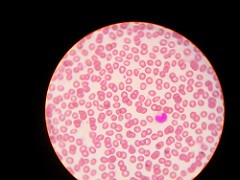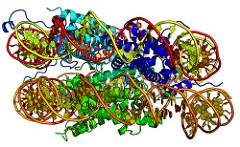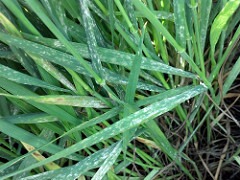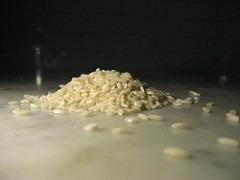
GM/Biotech Crops Report – September 2017
4th September 2017- GM/Biotech Crops Monthly Reports (BELOW) form part of BCPC’s free three-tier Biotech Crops Info service.
- This service also includes a weekly round-up of news from around the globe – see BCPC Newslink GM Crops section.
- Plus – Free access database on over 300 GM/biotech products covering 23 crops in the global market visit BCPC’s GM/Biotech Crops Manual – Register here for free access.
Already registered? Click here
GM/Biotech Crops Monthly Report September 2017
 |
Avoid the PERVs As previously mentioned in this bulletin and now reaching mainstream news channels, pigs could be used as a source of organs for human transplants once Porcine Endogenous Retroviruses found in their genetic code have been removed. A team at eGenesis have used CRISPr editing to remove these viruses from pig DNA taken from skin cells and then transferred the edited DNA into pig eggs to create embryos. So far 37 PERV-free piglets have been born. More |
|---|---|
| Polio vaccine from plants
A couple of months ago we mentioned the vaccine for blue tongue disease in sheep that can be manufactured in plants. Now John Innes have gone on to produce a vaccine for preventing polio in modified tobacco plants which is about to enter clinical trials: More |
 |
 |
A new approach to fighting cancer
Novartis has developed a technique to re-programme white blood cells taken from sufferers of some blood cancers. When returned to the donor they attack the cancer cells and 83% of people show full remission. The re-programming is specific to individuals and is currently very expensive but it shows what is possible and I am sure the costs will quickly fall. More
|
| New resistance gene identified in maize
A gene that seems to confer a degree of resistance to southern leaf blight, grey leaf spot and possibly northern leaf blight has been identified in maize and it is hoped that this will aid breeders in developing this resistance in new cultivars. More
|
 |
 |
Plants can re-programme their genetic material too
Plant defence genes are aggregated into a structure called a chromatin and by varying the shape of this structure plants can bring different genes into play to build specific proteins to fight specific diseases. More |
| Omega-3 fish oils from camelina
Rothamsted Research has shown the viability of producing omega-3 oils from genetically engineered camelina and has improved the storage capacity of oil in the seeds. This new source of omega-3 should improve food security and help reduce the rise in many cardiovascular diseases. More |
 |
 |
GM farmed salmon hits the shops
A few editions back we reported the development of salmon that reaches marketable size in half the time required by the wild type. Now these fish are being sold in Canada at a price of $11.70 per kilogramme. More Pic Source: Jaime Brown |
| Enhanced powdery mildew resistance in wheat
A group of Chinese researchers have used CRISP-r editing on wheat EDR1 gene to confer a degree of resistance to powdery mildew. While it offers a new approach to disease control, I wonder how robust the resistance will be when used in the field. More
|
 |
 |
Improved micronutrients in rice
A team in Zurich has produced a strain of rice that has increased zinc and iron content as well as beta-carotene which is a precursor of vitamin A. These micronutrients are important components of a healthy diet and it promises better nutrition for many. More
|
| Research goes up in smoke
Following the development of tobacco with lower nicotine content, the USA is set to impose upper limits on the nicotine content of cigarettes that will be below perceived addictive levels. More |
 |
 |
Improving the Green Revolution
The Green Revolution is one of the success stories in agriculture as varieties with shorter stems were able to support higher yields. However, research now shows that the mutation that introduced shorter stems also caused a shortening of the flower spike. Shorter flower spikes means fewer grain sites but a team at The John Innes centre in Norwich has shown how the two effects may be separated with the prospect of short stems with even more grain sites. More |
| A proliferation of virus vaccines from plants
Following on from the polio virus vaccine mentioned above and the sheep bluetongue virus vaccine described in a previous edition, now a team at Cape Town University has developed a plant that produces a vaccine for treatment of African Horse Sickness virus. This disease is often fatal and can only be treated by pre-infection vaccination. More |
 |
 |
Algal genes offer improved efficiency of photosynthesis in higher plants
A team at York University has noticed that some algae species are better at concentrating Co2 at the chromosomes which leads to better carbon fixation. Transferring this to crop plants could not only improve yields but perhaps also go some way to reducing global warming. More |
THE LATEST ADDITIONS TO THE GM/BIOTECH DATABASE ARE:
- Agrisure Duracade (5307) – maize resistant to Coleopteran and lepidopteran insects – approved for food and feed use in China and Viet Nam.
- MON87708 – soybean tolerant of glyphosate and dicamba – approved for feed use in Turkey.
- CV127 – soybeans with tolerance of sulfonyl-urea herbicides approved for environmental use in japan and feed use in Turkey.
- Vistive Gold (MON87705) – soybean with tolerance of glyphosate and modified oil content approved for food and feed use in Viet Nam and for feed use in Turkey.
- Genuity Droughtgard (MON87460) approved for food, feed and environmental use in Brazil, feed use in Turkey and food & feed use in Viet Nam.
- Enlist (DAS40278) maize – maize with 2,4-D tolerance approved for food and feed use in Malaysia.
- MZHG0JG – maize with tolerance to glyphosate and glufosinate approved for food & feed use in Malaysia and food use in Taiwan.
- DP305423 – soybean with tolerance of sulfonyl-urea herbicides and modified oil content approved for food and feed use in Malaysia.
- MON87403 – maize with increased ear biomass approved for food use in Taiwan.
- COT102 x MON15985 x MON88913 x MON88701 – cotton with lepidopteran insect resistance and tolerance of glyphosate, glufosinate and dicamba approved for food use in Taiwan.
- MON88701 x MON88913 – cotton with tolerance of glyphosate, glufosinate and dicamba approved for food use in Taiwan.
- MON88701 x MON88913 x MON15985 – cotton with Lepidopteran insect resistance and tolerance of glyphosate, glufosinate and dicamba approved for food use in Taiwan.
- MON88302 x MS8 x RF3 – oilseed rape with tolerance of glyphosate and glufosinate approved for food use in Taiwan.
- MON87705 x MON87708 x MON89788 – soybean with tolerance of glyphosate and dicamba approved for food use in Taiwan.
- MON88302 x RF3 – oilseed rape with tolerance of glyphosate and glufosinate approved for food use in Taiwan.
FOR INSTANT ACCESS TO GM BIOTECH MANUAL CLICK HERE (Registration required)
Already Registered? Click here to access

